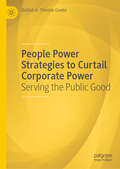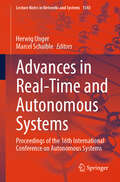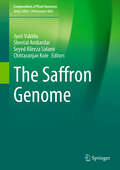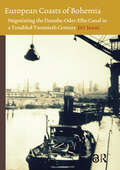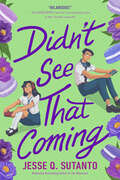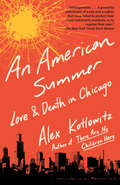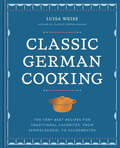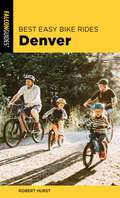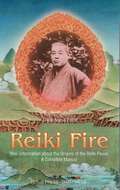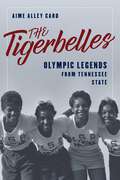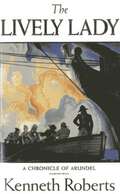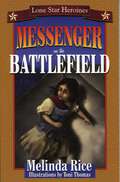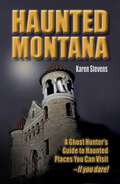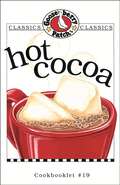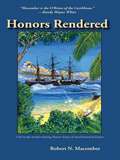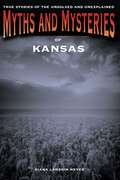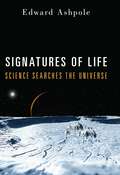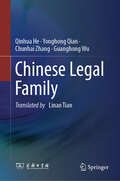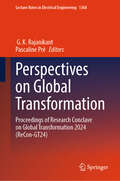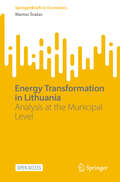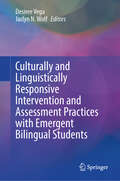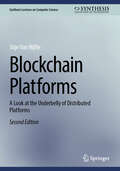- Table View
- List View
People Power Strategies to Curtail Corporate Power: Serving the Public Good
by Dalilah A. Shemia-GoekeHow can corporate power be effectively challenged when states struggle to regulate corporations, and companies wield stronger incentives and threats than citizens can exert on governments? Historically, industrial actions and labor movements have been the most effective forces against corporate dominance—but are they the only ones? What roles can other stakeholders beyond trade unions play? This book argues that curbing corporate power, preventing its abuses, and strengthening democracy require strategic people power. By collectively withdrawing cooperation and consent, civil society can disrupt and erode the pillars that sustain corporate influence. Drawing on nonviolent action theory and social movement research, this book expands the conversation on corporate social responsibility and corporate accountability. It explores how the strategic logic behind the civil rights movement, democracy campaigns, and anti-colonial struggles can guide modern efforts to hold multinational corporations accountable. This work is essential reading for scholars in corporate social responsibility, labor studies, sustainability, organizational studies, and collective action. It also offers valuable insights for activists, practitioners of nonviolent resistance, and anyone committed to corporate accountability and social justice.
Advances in Real-Time and Autonomous Systems: Proceedings of the 16th International Conference on Autonomous Systems (Lecture Notes in Networks and Systems #1543)
by Herwig Unger Marcel SchaibleThis book serves as both a cutting-edge reference and a practical guide to building AI systems that are transparent, trustworthy, and tuned for real-world impact, featuring contributors from three continents and backed by leading institutions. Unlock the next wave of graph-based artificial intelligence, fuzzy logic, and human-centric machine learning with this authoritative Springer proceedings book. Twenty-four rigorously peer-reviewed chapters—spanning semantic similarity in Wikipedia, sparse distributed representations, explainable image generation, privacy-preserving mobility analytics, sentiment mining in public transport, counterfeit-banknote detection, 5G network capacity planning, and mixed-order traffic prediction—provide a panoramic view of state-of-the-art research that turns theory into deployable solutions. Readers gain step-by-step methodologies for building restricted Boltzmann machines enhanced with fuzziness, dual-graph semantic extractors, Bloom-filter variants, and the versatile GraphLearner simulator. Each contribution includes reproducible workflows, comparative baselines, and publicly available code or datasets—accelerating adoption in academia and industry alike. Highlights include a blueprint for emotion-aware AI agents, a cloud-intelligence framework that empowers SMEs with decision support, and an adaptive metric for privacy-preserving urban-mobility sharing that balances usability and anonymity.
The Saffron Genome (Compendium of Plant Genomes)
by Chittaranjan Kole Jyoti Vakhlu Sheetal Ambardar Seyed Alireza SalamiThis book is about Saffron (Crocus sativus L.) that is the most expensive spice in the world. Though there are other books on saffron but none of them has comprehensive information on saffron genome, transcriptome, proteome, metabolome and microbiome. The book has been divided into five sections and 17 chapters that cover all the areas related to its cultivation, market & economy, genomics, transcriptomics, proteomics, metabolomics, tissue culture, microbiomics, metagenomics etc. In addition a chapter on molecular markers and their use in molecular genetic mapping in saffron that lacks genetic diversity as a sterile plant paves a way for selection of elite varieties based on the epigenetic variability. A section on in-vitro propagation elaborates on the corm production under controlled conditions. In summary this book encompasses most of the information available on this golden spice
European Coasts of Bohemia: Negotiating the Danube-Oder-Elbe Canal in a Troubled Twentieth Century (Technology and European History Series)
by Jirí JanácThe Danube–Oder–Elbe Canal attracted a great deal of attention throughout the twentieth century. Its promoters, The Danube–Oder–Elbe Canal, attracted a great deal of attention throughout the twentieth century and defined it as a tool for integrating a divided Europe. Although the canal was situated almost exclusively on Czech territory, it promised to create an integrated waterway system across the Continent that would link Black Sea ports to Atlantic markets. In return, the landlocked Czechoslovakian state would have its own connections to the sea. Today, the canal is an important building block of the European Agreement on Main Inland Waterways.,This book provides a fascinating story of the experts who confronted and contributed to different and often conflicting geopolitical visions of Europe. The canal was never completed, yet what is more remarkable is the fact that the canal remained on various agendas and attracted vast resources throughout the twentieth century.
A Real Van Gogh: How the Art World Struggles with Truth
by Henk TrompVincent van Gogh’s paintings and drawings are fabulously expensive. Millions of people admire his work, but are those masterpieces all genuine? To this day, the international art world struggles to separate the real Van Goghs from the fake ones, and the key question addressed in this book is what may happen to art experts when they publicly voice their opinions on a particular Van Gogh (or not). The story starts with art expert J.B. de la Faille who discovered to his own bewilderment that he had included dozens of fake Van Goghs in his 1928 catalogue raisonné. He wanted to set the record straight, but met with strong resistance from art dealers, collectors, critics, politicians and others, marking the beginning of a fierce clash of interests that had seized the art world for many decades of the twentieth century. In his fascinating account of the struggle for the genuine Vincent van Gogh, Tromp shows the less attractive side of the art world. His reconstruction of many such confrontations yields a host of intriguing and sometimes bewildering insights into the fates of art experts when they bring unwelcome news. A Real Van Gogh shows how much resistance an art expert might meet when he discovers a fake Van Gogh.
Didn't See That Coming
by Jesse Q. SutantoA hilariously fresh and romantic send-up to You&’ve Got Mail about a gamer girl with a secret identity and the online bestie she&’s never met IRL until she unwittingly transfers to his school, from the bestselling author of Dial A for Aunties, The Obsession, and Well, That Was Unexpected.Seventeen-year-old Kiki Siregar is a fabulous gamer girl with confidence to boot. She can&’t help but be totally herself… except when she&’s online.Her secret? She plays anonymously as a guy to avoid harassment from other male players. Even her online best friend—a cinnamon roll of a teen boy who plays under the username Sourdawg—doesn&’t know her true identity. Which is fine, because Kiki doesn&’t know his real name either, and it&’s not like they&’re ever going to cross paths IRL.Until she transfers to an elite private school for her senior year and discovers that Sourdawg goes there, too.But who is he? How will he react when he finds out Kiki&’s secret? And what happens when Kiki realizes she&’s falling for her online BFF?
An American Summer: Love and Death in Chicago
by Alex Kotlowitz2020 J. ANTHONY LUKAS PRIZE WINNERFrom the bestselling author of There Are No Children Here, a richly textured, heartrending portrait of love and death in Chicago's most turbulent neighborhoods.The numbers are staggering: over the past twenty years in Chicago, 14,033 people have been killed and another roughly 60,000 wounded by gunfire. What does that do to the spirit of individuals and community? Drawing on his decades of experience, Alex Kotlowitz set out to chronicle one summer in the city, writing about individuals who have emerged from the violence and whose stories capture the capacity--and the breaking point--of the human heart and soul. The result is a spellbinding collection of deeply intimate profiles that upend what we think we know about gun violence in America. Among others, we meet a man who as a teenager killed a rival gang member and twenty years later is still trying to come to terms with what he's done; a devoted school social worker struggling with her favorite student, who refuses to give evidence in the shooting death of his best friend; the witness to a wrongful police shooting who can't shake what he has seen; and an aging former gang leader who builds a place of refuge for himself and his friends. Applying the close-up, empathic reporting that made There Are No Children Here a modern classic, Kotlowitz offers a piercingly honest portrait of a city in turmoil. These sketches of those left standing will get into your bones. This one summer will stay with you.
Classic German Cooking: The Very Best Recipes for Traditional Favorites, from Semmelknödel to Sauerbraten
by Luisa WeissA collection of more than 100 of the best, most emblematic recipes of German and Austrian home cooks, from the author of Classic German Baking.To many, German food is humble comfort food, the kind of food that may not win a beauty award, but more than makes up for it with its power to soothe, nourish and cheer. In Classic German Cooking, Luisa Weiss—who was born in Berlin to an Italian mother and American father, and married into a family with roots in Saxony—has collected and mastered the essential everyday recipes of Germany and Austria. Classic German Cooking features traditional and time-honored recipes that are beloved in homes across the region, such as Rinderrouladen (Braised Beef Rolls), Quarkauflauf (Fresh Cheese Soufflé), Hühnerfrikassee (Chicken Fricassee) and authentic Viennese Gulasch or Alpine Germknödel (Plum Butter-Stuffed Steamed Dumplings). Cozy Apfelküchle (Apple Fritters) bring warmth to an afternoon snack, while tangy Spargelsalat (White Asparagus Salad) signals the sweet start of Spring.Luisa gives history and context to the cooking of Germany and its influences worldwide. Sprinkled with both personal stories and historical insights, Classic German Cooking will leave you with a well-rounded understanding of the cuisine and its lasting influence.
Best Easy Bike Rides Denver
by Robert HurstHidden in and around Denver are some great roads, trails, and bike paths that are fun to explore. Best Easy Bike Rides Denver describes 18 great rides in the metro area. With most rides between 5 and 30 miles—including road rides, rail trails, bike paths, and mountain bike rides—it&’s easy to find an interesting place to ride. Each route includes complete directions, a map, a text description of the area you&’ll be riding, and GPS coordinates of the start/finish point. Look inside to find:• Detailed maps and directions• Rides for everyone, including families• In-depth information about each ride, including length, terrain,traffic conditions, and road hazards• Interesting facts about each area
Reiki Fire: New Information about the Origins of the Reiki Power: A Complete Manual
by Frank Arjava PetterThe author, a Reiki master practicing in Japan, traces the origins in a new light following the path of Usuisan back in time through meetings with his descendants and climbing the holy mountain of his enlightenment.
Tigerbelles: Olympic Legends from Tennessee State
by Aime Alley CardThe Tigerbelles tells the epic story of the 1960 Tennessee State University all-Black women&’s track team, which found Olympic glory at the 1960 games in Rome. The author tells a story of desire, success and failure—of beating the odds—against the backdrop of a changing America, but tells it in an intimate way. Readers will come to know the individuals&’ unique struggles and triumphs, while also understanding how these dreams emerged and solidified just as the country was struggling to leave the Jim Crow era behind. Coach Edward Temple pushed each team member to the limit and saw the possibilities in them that they often did not see themselves. The elite group of talent included Wilma Rudolph, Barbara Jones, Lucinda Williams, Martha Hudson, Willye B. White and Shirley Crowder: women who once were and should still be known world-wide. Ultimately the team&’s drive was for more than medals: Coach Temple and the Tigerbelles wanted to change the world&’s perception of what a group of young Black women in the Jim Crow south were capable of. Tigerbelles is a multi-layered inspirational tale of triumph over adversity. Based on memoirs and interviews with surviving team members, including Coach Temple, this is the story of an impossible dream come true.
The Lively Lady
by Kenneth Lewis RobertsThis third installment in the Chronicles of Arundel is set during the War of 1812, The Lively Lady follows the fortunes of Richard Nason, an American sailing master and privateer who is captured and imprisoned by the British.
Messenger on the Battlefield (Lone Star Heroines)
by Melinda RiceIsabelina Montoya is happy in 1835 when her older sister, Feliciana, accepts the marriage proposal of a handsome Mexican soldier. At 11, Isabelina is old enough to help plan the wedding! But then Texas goes to war against Mexico, and Isabelinaís family is divided. Should they remain true to their Mexican heritage or fight for their new homeland?The Lone Star Heroines series brings to life real events in Texas history and shows young readers how girls living during those exciting times experienced and even contributed to those dramatic events. Each book in the series includes a chapter of background stories and pictures of the actual people who lived them.Look for other stories of The Lone Star Heroines Series, and the Lone Star Heroes series for boys, too.
Haunted Montana: A Ghost Hunter's Guide to Haunted Places You Can Visit - IF YOU DARE!
by Karen StevensHere&’s your ghostly guide to spooks, spirits, and specters of Montana. From haunted hotels to eerie inns, this book will take you to all the spookiest spots in the state. Want to meet a phantom? Experience a poltergeist? Commune with the dearly departed? Let Haunted Montana lead the way to places you can stay to experience the other side.
Hot Cocoa Cookbook
by Gooseberry PatchGet a taste of Gooseberry Patch in this collection of over 20 favorite cocoa recipes! Mmm...so chocolatey! Our Hot Cocoa cookbook will make you feel warm & cozy with sweet recipes like peppy peppermint hot chocolate, cozy homemade hot chocolate mix and puffy homemade marshmallows.
Honors Rendered (Honor Series)
by Robert N. MacomberJanuary 1889. German and American naval forces are engaged in an escalating confrontation in Samoa in the South Pacific. Warships are at battle stations. Naval reinforcements from both nations are on the way. The press in Berlin, Hamburg, Washington, and San Francisco is calling for national honor to be defended. At any minute, open warfare may erupt. All it will take is one spark.President Grover Cleveland orders Commander Peter Wake, Office of Naval Intelligence, to clandestinely accomplish one of two things: either somehow prevent all-out war between Germany and America, or win it decisively at the outset to prevent combat from spreading worldwide. Coming up with an admittedly makeshift plan along the way, Wake enlists the help of an unlikely trio he encounters in the Pacific: a Hawaiian artillery officer, a renegade Methodist minister, and a beautiful widow. Unfortunately for Wake—and unbeknownst to him—each of them has his or her own motives for heading to Samoa. If he fails, thousands across the world will die. It is a dilemma right out of today's headlines: When do you cross the line of civilized behavior to potentially save lives? How do you live with the consequences? Amidst this dilemma, Wake decides to employ a repulsive tactic that results in horror for a member of his team, something he will regret for the rest of his life. The intrigue is as deadly as the action in this novel, which culminates in one of the most significant events in Pacific—and American—naval history.
Myths and Mysteries of Kansas: True Stories of the Unsolved and Unexplained (Myths and Mysteries Series)
by Diana Lambdin MeyerThis selection of twelve stories from Kansas's past explores some of the Sunflower State's most compelling mysteries and debunks some of its most famous myths.
Signatures of Life: Science Searches the Universe
by Edward AshpoleAn intriguing overview of the ways in which science could find evidencefor extraterrestrial life Are we alone in the universe, oris life a universal phenomenon?For fifty years,astronomers in SETI (Search for ExtraterrestrialIntelligence) have scanned the universe for intelligent signals, but with no success. In this intriguing book, Edward Ashpole explains the probable reasons for this and discusses other avenues of investigation more in line with the nature of science and technology. The author examines the problems inherent in scanning the universe for radio or optical signals from an alien intelligence. Theseinclude the difficulty of trying to communicate with another species possessing a completely unknown form of technology and the vast distances that alien communications would have to travel to reach us. This leads Ashpoleto other ways of finding evidence for extraterrestrial life, giventhat advanced civilizations would probably use artificial intelligenceforinterstellar travel. Our scientists now know how to detect the presence of life on a planet by observing its spectral lines, so more advanced alien researchers would have had ample time (about two billion years) to investigate these "signatures of life" coming from Earth. Hence, the author argues, alien space probes could exist within our own solar system; there might be evidence on the erosion-free Moon or on another moon or planet. In fact, a few scientists have scannedNASA's best photography,looking for evidence of such "alien archaeology." In a final chapter, the author urges an open-minded attitude on the part of scientists to allcredible sources ofinformation, along with the use of the scientific method to test various hypothesesand weed out the fantasy factor, which so often interferes with seriousattempts to find hard evidence of extraterrestrial intelligence. Informative and fascinating, Signatures of Life delves into a topic thatoften provokes wild speculation in a thought-provoking yet scientifically responsible way.
Chinese Legal Family
by Qinhua He Yonghong Qian Chunhai Zhang Guanghong WuThis book primarily focuses on the origin, essence, characteristics, and fundamental content of the Chinese Legal Family, the development of the laws as they were instituted in China and other countries in the Chinese Legal Family—such as Japan, Korea, and Vietnam—the impact and the historical status of the Chinese Legal Family. The present version is the English translation, completed under the Translation Project of Chinese Academic Works sponsored by the Chinese Fund for the Humanities and Social Sciences (with some sections abbreviated). The book&’s target audience primarily falls into two categories: those interested in traditional Chinese legal culture and the legal cultures of East Asian countries such as Japan, Korea, and Vietnam, and those who wish to conduct further in-depth research on the legal concepts, legal systems, legal institutions, legal procedures, legal education, and legal research of China and East Asian countries, as well as their characteristics and essence.
Sexualität in der Psychotherapie im Kindes- und Jugendalter (essentials)
by Philipp Stang Claudia OndrejtschakSexualität ist ein zentraler Bestandteil menschlicher Entwicklung – auch im Kindes- und Jugendalter. Dennoch wird sie in der psychotherapeutischen Arbeit mit jungen Menschen oft übersehen oder gar vermieden. Dieses Buch schließt eine wichtige Lücke: Es ergänzt bestehende Lehrwerke zur Kinder- und Jugendlichenpsychotherapie um das bislang kaum beleuchtete Feld der Sexualtherapie. Anschaulich, praxisnah und wissenschaftlich fundiert zeigt der Band, wie psychosexuelle Entwicklung altersgerecht thematisiert und therapeutisch begleitet werden kann – ohne Pathologisierung, mit viel Feingefühl und klaren methodischen Leitlinien. Der Fokus liegt auf Kindern unter 14 Jahren sowie Jugendlichen bis 21 Jahren. Aspekte wie Gesprächsführung, Visualisierung, Medien- und Materialeinsatz stehen im Mittelpunkt und geben Therapeut:innen konkrete Werkzeuge an die Hand, um junge Patient:innen im kommunikativen Umgang mit Sexualität zu stärken. Ein unverzichtbares Fachbuch für alle, die Kinder und Jugendliche psychotherapeutisch begleiten – und Sexualität als wichtigen Teil der Entwicklung ernst nehmen.
Perspectives on Global Transformation: Proceedings of Research Conclave on Global Transformation 2024 (ReCon-GT24) (Lecture Notes in Electrical Engineering #1368)
by G. K. Rajanikant Pascaline PréThis book presents selected proceedings of the Research Conclave on Global Transformation 2024 (ReCon-GT24). In an era of unprecedented challenges and opportunities, this Conclave is a nexus for the world&’s foremost minds to converge, collaborate, and ignite transformative change. This book presents cutting-edge research on pathways toward a better global future focusing on sustainability, inclusivity, and resilience. From cutting-edge scientific breakthroughs to innovative policy frameworks, the book explores the multifaceted dimensions of transformation and discovers actionable insights that can propel us toward a more harmonious world. This book is a valuable resource for beginners, researchers, and professionals interested in innovative design and related fields.
Energy Transformation in Lithuania: Analysis at the Municipal Level (SpringerBriefs in Economics)
by Mantas ŠvažasThis open access Brief investigates the issue of energy transformation in small countries without their own fossil resources. Using Lithuania as a case study, the Brief analyses energy transformation from both a municipal and regional perspective, outlining the reasons for pursuing energy transformation, the main constraints that exist, and proposing practical methodologies for assessing local energy potential. The chapters focus on real-world challenges, including political barriers and competence gaps, while also making concrete policy recommendations and offering models for energy transformation in regional areas. Filling a critical gap in the discourse on municipal energy transformation, this Brief will be of interest to scholars, researchers, and policymakers in the fields of energy policy, regional development, and sustainability as well as professionals in municipal governance, energy sector decision-makers, and private sector stakeholders interested in decentralized energy solutions.
Culturally and Linguistically Responsive Intervention and Assessment Practices with Emergent Bilingual Students
by Desiree Vega Jaclyn N. WolfThis book addresses the general and special education needs of emergent bilingual students from intervention that supports their academic and social-emotional needs to assessment for special education services. It provides contextual information about emergent bilingual students&’ opportunities for academic success and language development. The book describes the application of a culturally and linguistically responsive multitiered system of supports (MTSS), including specialized considerations related to their literacy /language and math needs and the importance of culturally adapted behavioral, social-emotional, and academic interventions. In addition, the book offers guidance on the evaluation process for special education and related services, including considerations for differentiating language, culture, and disability across various eligibility categories, such as speech and language impairment, specific learning disability, intellectual disability, and autism. It also discusses opportunities for collaboration with families, speech-language pathologists, and interpreters during the assessment and intervention processes. Key areas of coverage include: · The educational experiences and needs of emergent bilingual students. · Implementing a multitiered system of supports (MTSS) with culturally adapted interventions. · <span style="font-family: 'Calibri Light',sans-serif; mso-ascii-theme-font: major-latin; mso-hansi-theme-fon
Blockchain Platforms: A Look at the Underbelly of Distributed Platforms (Synthesis Lectures on Computer Science)
by Stijn Van HijfteThis Second Edition introduces the technical features that make up blockchain technology today, including the numerous changes that have occurred since the publication of the prior edition. The author begins with an updated explanation of all technological concepts necessary to understand any discussions related to distributed ledgers and a short history of earlier implementations. The book covers the Ethereum network, cryptocurrencies running on top of the network, and smart contracts, and the various private and public platforms. The author also presents an up-to-date overview of the blockchain networks that readers can use to build solutions of their own and the tools that can help them in the process. This new edition expands upon the first edition by incorporating discussion of recent developments in the blockchain landscape, including major events and new algorithms.
Translational Research Methods for Pediatric Brain Tumors (Neuromethods #226)
by Michael GoldsteinThis volume focuses on translational models of pediatric brain cancers that are critical to understanding tumor formation, tumor progression, and response to treatment. These models are particularly important for drug screens and preclinical testing of novel treatment approaches involving chemotherapy, radiation, and immunotherapy. The chapters in this book cover a variety of the latest technologies used to investigate the molecular backbone of pediatric brain tumors. These new diagnostic tools include tumor characterization from liquid biopsy; capturing the local heterogeneity of a single tumor through spatial genomics; and deciphering the unique epigenetic traits of pediatric brain tumors by profiling tumor methylome and post-translational histone modifications. Some chapters also describe the latest experimental tools designed to explore new therapeutic strategies and optimize current treatments. In the Neuromethods series style, chapters include the kind of detail and key advice from the specialists needed to get successful results in your laboratory.Cutting-edge and thorough, Translational Research Methods for Pediatric Brain Tumors is a valuable resource for clinicians and researchers who want to learn more about experimental pediatric neuro-oncology and help guide the field toward a brighter future.
